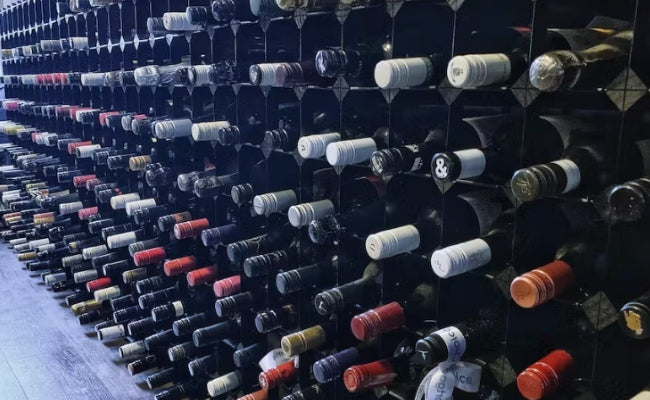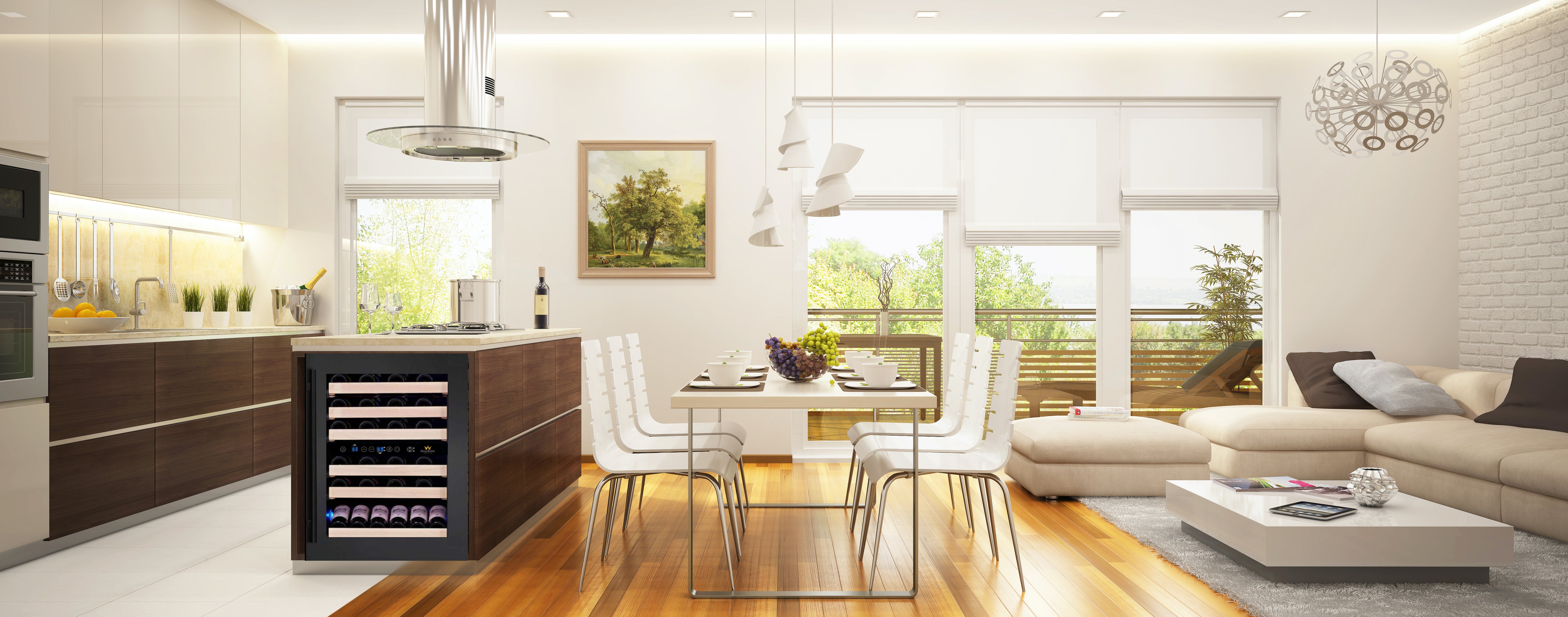
Shelf Life of Red Wine: How Long Can It Last Once Opened?
Red wine is a beloved beverage enjoyed by many individuals around the world. Whether sipped casually or savored with a meal, red wine's rich flavors and aromas can elevate any occasion. But what happens once that bottle is opened? How long can you expect your red wine to maintain its quality and taste once exposed to air? In this article, we will explore the shelf life of red wine once opened and discover ways to extend its longevity.
Understanding the Basics of Red Wine
Before delving into the shelf life of red wine, it is essential to understand the basics of this popular beverage. Red wine is typically made from dark-colored grape varieties, such as Cabernet Sauvignon, Merlot, or Pinot Noir. These grapes undergo a fermentation process where the juice interacts with the grape skins, resulting in red wine's rich color and complex flavors.
The Composition of Red Wine
Red wine is a complex mixture of various compounds, including alcohol, acids, sugars, phenols, and tannins. These components contribute to the wine's overall taste, aroma, color, and structure. However, it's important to note that the composition of red wine can vary depending on the grape variety, winemaking techniques, and aging process.
Red wine also contains volatile organic compounds (VOCs), contributing to its aroma and flavor profile. These compounds, such as esters, terpenes, and lactones, are responsible for the fruity, floral, and spicy notes often detected in red wines. The presence and concentration of these VOCs can be influenced by factors like grape ripeness, fermentation temperature, and aging conditions, adding to the complexity and uniqueness of each bottle.
Factors That Influence Red Wine's Shelf Life
Several factors can affect the shelf life of red wine once opened. One crucial element is the type of red wine. Light-bodied red wines like Beaujolais or Dolcetto tend to have a shorter shelf life than full-bodied options like Cabernet Sauvignon or Syrah. Additionally, the age of the wine and its overall quality can also impact how long it remains enjoyable after opening.
The storage conditions of red wine can significantly influence its shelf life. Factors such as temperature, humidity, light exposure, and bottle position affect how quickly a wine deteriorates after opening. Ideally, red wine should be stored in a cool, dark place, away from direct sunlight and temperature fluctuations, to preserve its flavors and aromas for as long as possible.
The Impact of Opening on Red Wine's Shelf Life
Once a bottle of red wine is opened, its exposure to oxygen affects its taste and quality. Understanding the role of oxygen in wine degradation and how different sealing methods can extend the wine's longevity is crucial for preserving its flavor.
The Role of Oxygen in Wine Degradation
Oxygen plays a significant role in the aging process of red wine. While oxygen is necessary during maturation in the barrel, excessive exposure to oxygen after opening can lead to oxidation. Oxidation can cause changes in the wine's color, aroma, and flavor profile, resulting in a less enjoyable drinking experience.
Notably, some winemakers intentionally expose their wines to controlled amounts of oxygen post-bottling to enhance specific flavor profiles. This technique, known as micro-oxygenation, can soften harsh tannins and improve the overall balance of the wine. However, this delicate balance must be carefully monitored to prevent over-oxidation, which can quickly deteriorate the wine's quality.
How Sealing Methods Affect Wine Longevity
The choice of sealing method significantly impacts the opened red wine's shelf life. Traditionally, natural cork closures were the primary option. However, corks can allow small amounts of oxygen to enter the bottle over time, potentially accelerating the wine's degradation. Alternative closures, such as screw caps or synthetic corks, provide a more airtight seal, minimizing oxygen exposure and preserving the wine's freshness.
Screw caps, once associated with lower-quality wines, have gained popularity for their excellent seal and prevention of cork taint. Synthetic corks from materials like plastic or composite offer a similar airtight advantage while mimicking the traditional cork appearance. These modern closures extend the shelf life of opened red wine and contribute to sustainable winemaking practices by reducing the demand for natural cork, a limited resource.
Proper Storage for Opened Red Wine
Properly storing opened red wine is essential for maintaining its quality and extending its shelf life. Understanding the ideal temperature and humidity conditions and the importance of correctly positioning the wine bottle can make a significant difference.
When storing opened red wine, temperature, and humidity are crucial factors. The recommended temperature for storing red wine is around 55 degrees Fahrenheit (12-13 degrees Celsius). It is also essential to keep the humidity level between 50-80% to prevent the corks from drying or the wine from spoiling.
Proper storage of opened red wine goes beyond just temperature and humidity. Light is another crucial factor to consider. Ultraviolet (UV) light can damage wine, causing it to age prematurely and develop off-flavors. Therefore, it is best to store opened red wine in a dark place or use UV-protective wine bags or covers to shield the bottle from light exposure.
The Importance of Positioning the Wine Bottle Correctly
Positioning the opened wine bottle correctly can also impact its longevity. It is best to store the wine upright to limit the surface area exposed to oxygen to minimize oxidation. However, some experts suggest that storing the bottle at a slight angle can keep the cork moist, reducing the risk of drying out and contaminating the wine.
Another consideration when storing opened red wine is the location. Keeping the wine in a cool, dark, and vibration-free environment is advisable. Constant movement or vibrations can disturb the sediments in the wine, affecting its flavor and overall quality. Additionally, storing the wine away from solid odors is crucial, as wine can easily absorb surrounding smells through the cork, altering its taste and aroma.
Signs Your Opened Red Wine Has Gone Bad
Over time, opened red wine may lose its flavor and freshness. Knowing the signs of spoiled red wine can help avoid a disappointing drinking experience.
Changes in Color and Aroma
One unmistakable sign of spoiled red wine is a change in its color and aroma. If the wine appears brownish or has a vinegar-like smell, it may indicate that it has oxidized and is no longer suitable for consumption.
Sediment can form in red wine as it ages, but if you notice excessive sediment or particles floating in it, it could be a sign of spoilage. This can occur due to improper storage or a breakdown in the wine's composition.
The Taste Test: Identifying Spoiled Wine
The best way to determine if red wine has gone wrong is through a taste test. If the wine tastes significantly different from its usual flavors, has a sour or vinegar-like taste, or feels flat on the palate, it is likely past its prime.
Tips to Extend the Shelf Life of Opened Red Wine
While red wine will inevitably start to deteriorate once opened, there are a few tips and techniques to extend its shelf life and continue enjoying it for a little longer.
Use Wine Preservation Tools
Employ devices like vacuum pumps or inert gas sprays to remove oxygen from the bottle.
These tools help create a seal that minimizes oxygen exposure and keeps the wine fresher for longer.
Refrigerate Opened Red Wine
Store red wine in the refrigerator to significantly extend its shelf life.
The cooler temperatures slow down chemical reactions that cause wine degradation.
Allow the wine to reach room temperature before serving to appreciate its flavor and aroma fully.
Decant into Smaller Containers
Transfer the remaining wine into a smaller bottle to reduce the surface area exposed to oxygen.
This reduces oxidation and can preserve the wine’s flavors and aromas for a few extra days.
Store in a Cool, Dark Place
Keep opened red wine in a cellar or wine fridge away from direct sunlight and heat.
This helps maintain the quality of the wine and prevents accelerated aging.
Frequently Asked Questions about Red Wine Shelf Life
Can Opened Red Wine Be Used for Cooking?
Yes, opened red wine that has started to lose its freshness and quality can still be used for cooking. While it may not be ideal for drinking, it can add depth and flavor to various recipes, including stews, sauces, or marinades.
Is It Safe to Drink Old Opened Red Wine?
While drinking old, opened red wine is generally safe, it is essential to consider its taste, smell, and appearance. If the wine displays signs of spoilage, it is best to avoid consuming it. Drinking spoiled wine can sometimes lead to an unpleasant experience or even cause mild digestive discomfort.
When considering the shelf life of red wine, it's important to note that different types of red wine have varying aging potentials. For example, robust red wines like Cabernet Sauvignon or Syrah tend to age well and can even improve in flavor over time when stored correctly. On the other hand, lighter red wines like Pinot Noir or Beaujolais are best consumed within a few years of production to enjoy their fresh and fruity characteristics.








